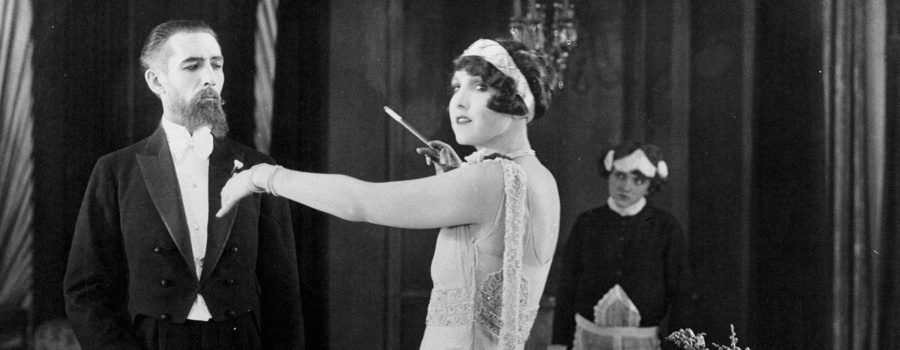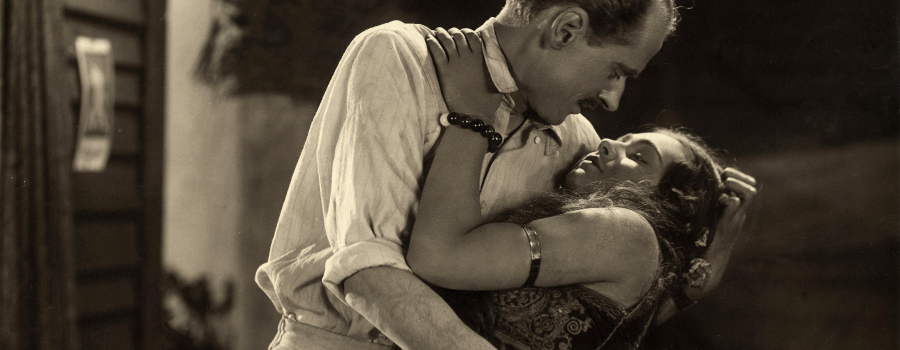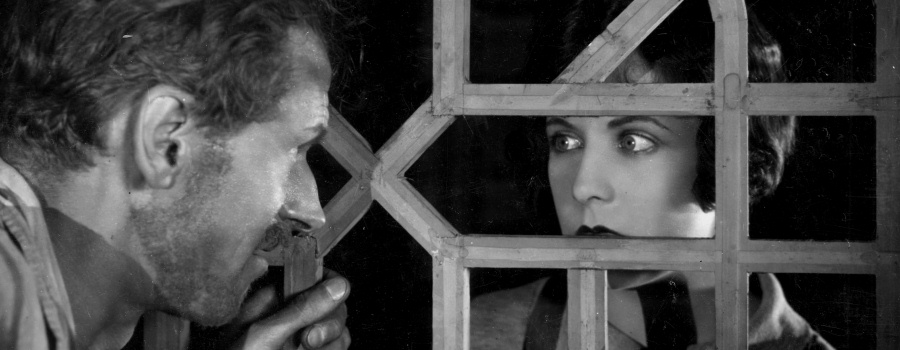The Pleasure Garden (1925)
/0001.jpg) | |
| Alfred Hitchcock | |
| Michael Balcon Erich Pommer | |
| Eliot Stannard | |
| Oliver Sandys (original novel) | |
| Virginia Valli Carmelita Geraghty Miles Mander John Stuart | |
| Gaetano di Ventimiglia | |
| 83 minutes (7,500 feet) | |
| black & white | |
| silent with English intertitles | |
| 1.33:1 | |
| Gainsborough Pictures & Emelka | |
| Wardour Films (UK) | |
| DVD | |
Synopsis
Patsy Brand is a chorus girl at the Pleasure Garden music hall. She meets Jill Cheyne who is down on her luck and gets her a job as a dancer. Jill meets adventurer Hugh Fielding and they get engaged, but when Hugh travels out of the country, she begins to play around.
Production
In 1924, Michael Balcon organised a five-film partnership between Gainsborough Pictures and German studio Emelka. Balcon decided that the first joint production would be based on Oliver Sandys' "The Pleasure Garden" and that Hitchcock was now ready to direct his first full-length feature film.
Pre-Production
Screenplay
The scenario was written by Eliot Stannard in the first of his 8 collaborations with Hitchcock.
Cast and Crew
Initially, in June 1925, German and American actresses Maria Minzenti[1] and Margueritte De La Motte[2] were announced as leads for the film, with the aim of appealing to audiences in both countries. In particular, Michael Balcon was keen to cast an American actress, "a name the public would know which at that time meant it had to be a Hollywood name" The two male leads chosen were English actor Miles Mander and Scottish actor John Stuart.[3]
At the start of July, German press named Virginia Valli as the replacement for De La Motte. Seemingly unexpectedly, Valli arrived in Europe with a travel companion — rising star Carmelita Geraghty.[4] Just as shooting started, Geraghty was announced to the press as Minzenti's replacement.[5][6]
Hitchcock's fiancé Alma Reville was the Assistant Director for the film and they both travelled to Munich to finalise the film's pre-production.
Principal Photography
As part of the deal with Emelka, the film would be shot on location in Italy and interiors at the company's Geiselgasteig studios in a southern suburb of Munich.[7]
With pre-production complete by late spring 1925, Hitchcock was joined in Munich by Miles Mander and German actress Elizabeth Pappritz who, along with cameraman Gaetano di Ventimiglia, travelled down to the Italian Riviera to film a number of location scenes before heading back north to Lake Como.
Meanwhile, Alma headed west to the French port of Cherbourg to meet Valli and Geraghty, who both arrived on the RMS Aquitania. From there, she was to escort the American actresses to Paris, to pick out their wardrobe for the film, and then on to Lake Como to rendezvous with the others.[8]
From the outset, the production was plagued by problems. At Munich station, Mander almost missed the train after accidentally leaving his makeup box in a taxi.[9] When they reached the Italian border, di Ventimiglia recommended that they hide the camera and the unexposed film stock to avoid paying custom charges. Unfortunately, the customs officials found the entire film stock and confiscated it until Hitchcock paid a fine.[10]
The first scenes were filmed in Genoa during the last week of March. From there, cast and crew headed 60 miles down the coast to Alassio to film the scene were Mander drowns the native girl, played by Pappritz.[11] However, the German actress hired to play the girl was reportedly menstruating and refused to enter the water. In later interviews, Hitchcock claimed to have been totally ignorant when it came to the workings of the female body and needed cameraman Ventimiglia to explain what the actress meant. At short notice, a local hotel waitress was hired her to play the scene.[12][13]
Production then moved north to the Villa D'Este at the southern end of Lake Como, where they were joined by Alma and the American actresses to shoot the lakeside honeymoon scenes. By now, Hitchcock was running extremely low on funds — various fines, unexpected sundry costs and the theft of his wallet had forced him to borrow money from Mander, Valli and Alma. By the time they finally arrived back at the Munich studios in late July, Hitchcock claimed to have only one pfennig left.[14]
Shooting at the Emelka Studios was completed by the end of August and a rough cut of the film was assembled for the visiting Michael Balcon to view. Impressed, Balcon declared that the "surprising thing is that technically it doesn't look like a continental picture. It's more like an American film"[15], although the film was undoubtedly also influenced by Hitchcock's exposure to German film-making techniques and style.[16][17]
Release & Reception
Balcon had already arranged the second Gainsborough-Emelka production, The Mountain Eagle, and The Pleasure Garden waited to be shown to the trade until March 1926, a month after production on the second film had been completed.[18] Initial reviews were positive, with the Daily Express calling it "an outstanding film" and the Observer, "[Hitchcock] has made some of [the source material], so interesting as to make one eager and optimistic for his future".[19][20]
The film was first screened to the public at the Capitol in Haymarket, London, during the week commencing 12th April 1926. However, Gainsborough's distributor C.M. Woolf felt that The Pleasure Garden had no commercial appeal and apparently embargoed the film's provincial release for several months until after the success of The Lodger.[21]
By January 1927, the film was showing outside of London and circulated the provinces until November — for further details, see dates of UK screenings.
U.S. Release
The film appears to have received a U.S. distribution in 1926, with local American newspapers reporting screenings as early as September 1926. Most cinemas heavily promoted Virginia Valli's name whilst avoiding mentioning the film was a British production.[22]
Screenings were still being advertised as late as April 1928.[23]
Preservation Status
As was often the case at the time, distributors would re-edit films and the surviving prints vary in length. In his book English Hitchcock, Charles Barr identified that the film's ending varies depending on the print.
At some point, American film collector Raymond Rohauer took a print of The Pleasure Garden and re-edited it with replacement intertitles and this became the version initially available as a bootleg DVD and then, officially, as a tinted release by Network DVD in 2008.
A second bootleg transfer, based on a European TV broadcast, is also in circulation and this appears to be closer to the original film with intact original intertitles.
In 2010, the British Film Institute launched the "Save the Hitchcock Nine" funding campaign to undertake a full restoration of all the surviving Hitchcock silent films. The restoration of The Pleasure Garden used all four known surviving nitrate prints — from the film archives of the BFI, EYE Film Institute Netherlands, Cinémathèque Française, and the Southern Methodist University in Texas — to reconstruct a new 92 minute print of the film that was premièred as part of their "The Genius of Hitchcock" season with a new score by composer Daniel Patrick Cohen. [24][25][26]
See Also...
For further relevant information about this film, see also...
- 1000 Frames of The Pleasure Garden (1925)
- articles about The Pleasure Garden (1925)
- complete cast and crew
- filming locations
- titles and intertitles
- trivia
- web links to information, articles, reviews, etc
DVD Releases
released in 2008

|
The Pleasure Garden (1925) - Network (UK, 2008) - part of a box set PAL 1.33:1 |
released in 2007

|
The Pleasure Garden (1925) - Journaux.fr (France, 2007) PAL 1.33:1 |
unknown release date

|
The Pleasure Garden (1925) - unknown company (PAL bootleg) PAL 1.33:1
| ||

|
The Pleasure Garden (1925) - unknown company (NTSC bootleg) NTSC 1.33:1
|
Image Gallery
Images from the Hitchcock Gallery (click to view larger versions or search for all relevant images)...
Film Frames

Themes
- voyeurism - the man in the audience watching Patsy through his opera glasses
Cast and Crew
Directed by:
- Alfred Hitchcock
- Alma Reville - assistant director
Starring:
- Virginia Valli - Patsy Brand
- Carmelita Geraghty - Jill Cheyne
- Miles Mander - Levett
- John Stuart - Hugh Fielding
- Georg H. Schnell - Oscar Hamilton
- Karl Falkenberg - Prinz Ivan
- Ferdinand Martini - Mr Sidey
- Florence Helminger - Mrs Sidey
- Lewis Brody (uncredited)
- Elizabeth Pappritz - Native Girl (uncredited)[27]
Produced by:
Written by:
- Oliver Sandys - original novel
- Eliot Stannard
Photographed by:
Art Direction by:
Other crew:
- Alma Reville - continuity
Notes & References
- ↑ Also known as Maria Mindzenty. See Internet Movie Database
- ↑ Internet Movie Database
- ↑ Alfred Hitchcock: A Life in Darkness and Light (2003) by Patrick McGilligan, page 68
- ↑ Although most source state that Hitchcock wasn't expecting Geraghty, a report in the Pennsylvanian New Castle News (08/Jul/1925) implies that she was in fact travelling to Germany to make several films.
- ↑ Hitchcock Annual (2000) - German Hitchcock
- ↑ See Life among the Stars and My Screen Memories. Hitchcock's recollections indicate Alma was expecting to meet Valli alone at Cherbourg and Geraghty was an unexpected burden on the already tight budget. The last minute announcement that Geraghty would co-star implies Gainsborough and Emelka executives saw this as too good an opportunity to miss, as the young actress was one of the Western Association of Motion Picture Advertisers "Baby Stars" of 1924.
- ↑ Alfred Hitchcock: A Life in Darkness and Light (2003) by Patrick McGilligan, page 68
- ↑ Wikipedia: RMS Aquitania
- ↑ Film Weekly (1936) - My Screen Memories
- ↑ Film Weekly (1936) - My Screen Memories
- ↑ Some sources state the drowning scene was shot further along the coast at San Remo or possibly at Lake Como, but this contradicts Hitchcock's recollections from the 1930s.
- ↑ Alfred Hitchcock: A Life in Darkness and Light (2003) by Patrick McGilligan, pages 69-70
- ↑ Some sources claim American actress Nita Naldi played the native girl, but this is an error attributed to Peter Noble. Deutsche Filmwoche (09/Oct/1925) named the German actress playing the native girl as Elisabeth Pappritz.
- ↑ Film Weekly (1936) - My Screen Memories
- ↑ Alfred Hitchcock and the British Cinema (2000) by Tom Ryall, page 87
- ↑ In "English Hitchcock", scholar Charles Barr identifies a filmic style similar to American director D.W. Griffth, who Hitchcock often cited as an influence.
- ↑ Alfred Hitchcock: A Life in Darkness and Light (2003) by Patrick McGilligan, pages 70-71
- ↑ Alfred Hitchcock and the British Cinema (2000) by Tom Ryall, page 91
- ↑ Alfred Hitchcock: A Life in Darkness and Light (2003) by Patrick McGilligan, page 81
- ↑ The Observer (14/Apr/1926) - The Pleasure Garden
- ↑ The Encyclopedia of Alfred Hitchcock (2002) by Thomas M. Leitch, page 255
- ↑ For example, Hammond Lake County Times (11/Sep/1926) and Lowell Sun (18/Oct/1926).
- ↑ For example, Alton Evening Telegraph (09/Apr/1928).
- ↑ British Board of Classification: BFI print of "The Pleasure Garden"
- ↑ BFI: Restoring The Pleasure Garden
- ↑ Journal of Film Preservation (2012) - London - Restoring Hitchcock by Kieron Webb & Bryony Dixon
- ↑ According to Deutsche Filmwoche (09/Oct/1925)
| Hitchcock's Major Films | |
| 1920s | The Pleasure Garden · The Mountain Eagle · The Lodger · Downhill · Easy Virtue · The Ring · The Farmer's Wife · Champagne · The Manxman · Blackmail |
| 1930s | Juno and the Paycock · Murder! · The Skin Game · Rich and Strange · Number Seventeen · Waltzes from Vienna · The Man Who Knew Too Much · The 39 Steps · Secret Agent · Sabotage · Young and Innocent · The Lady Vanishes · Jamaica Inn |
| 1940s | Rebecca · Foreign Correspondent · Mr and Mrs Smith · Suspicion · Saboteur · Shadow of a Doubt · Lifeboat · Spellbound · Notorious · The Paradine Case · Rope · Under Capricorn |
| 1950s | Stage Fright · Strangers on a Train · I Confess · Dial M for Murder · Rear Window · To Catch a Thief · The Trouble with Harry · The Man Who Knew Too Much · The Wrong Man · Vertigo · North by Northwest |
| 1960s | Psycho · The Birds · Marnie · Torn Curtain · Topaz |
| 1970s | Frenzy · Family Plot |
| view full filmography | |






